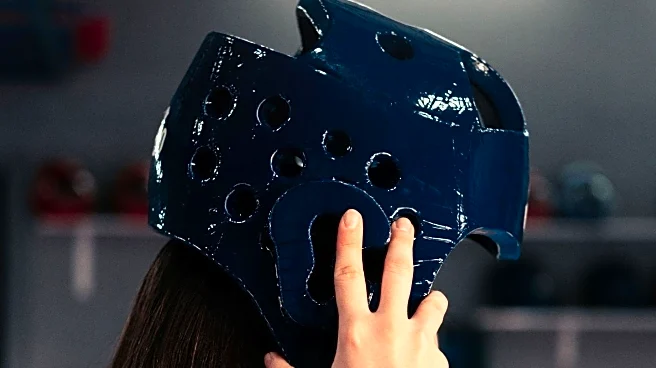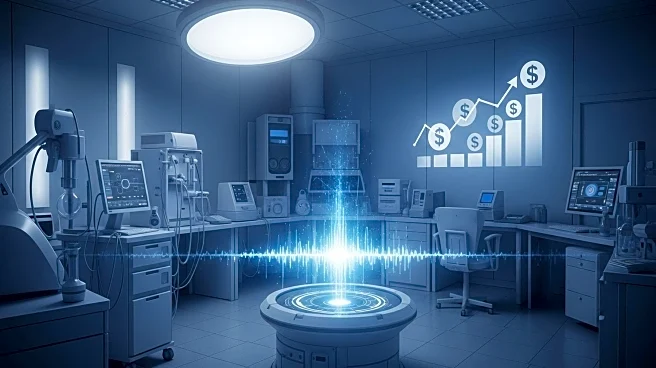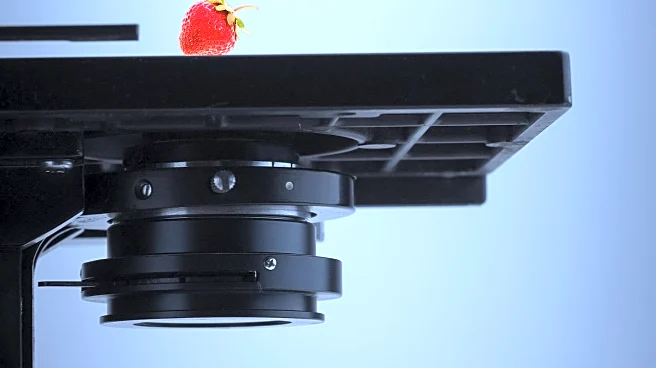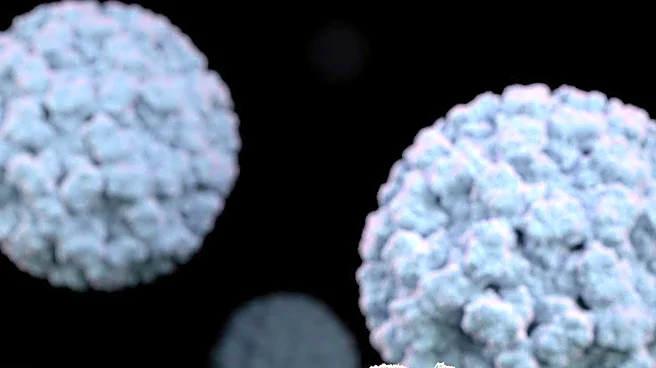What is the story about?
What's Happening?
bioAffinity Technologies, Inc. has released a case study demonstrating the effectiveness of its CyPath® Lung test in diagnosing lung cancer in patients with difficult-to-assess ground-glass pulmonary nodules. These nodules, which appear as hazy areas on imaging, often pose a diagnostic challenge due to their potential to mimic benign lesions. The case involved a 66-year-old former smoker whose incidental CT scan revealed ground-glass nodules. The CyPath® Lung test indicated a likely malignancy, leading to further investigation and confirmation of lung cancer through robotic bronchoscopy. This test uses advanced flow cytometry and artificial intelligence to analyze sputum samples, providing high sensitivity and specificity in detecting lung cancer.
Why It's Important?
The introduction of CyPath® Lung into clinical practice could significantly alter the management of patients with indeterminate lung nodules. Traditionally, these nodules require years of watchful waiting, which can delay diagnosis and treatment. By providing actionable results, CyPath® Lung offers a timely intervention that can improve patient outcomes and survival rates. This advancement is particularly crucial for high-risk patients, such as smokers, who may benefit from early detection and treatment of lung cancer. The test's ability to reduce uncertainty in diagnosis could lead to more efficient healthcare delivery and potentially lower healthcare costs associated with prolonged monitoring.
What's Next?
The successful application of CyPath® Lung in this case study may encourage broader adoption of the test in clinical settings. As healthcare providers seek to improve diagnostic accuracy and patient outcomes, CyPath® Lung could become a standard component of lung cancer evaluation protocols. Further studies and real-world applications will likely continue to validate its effectiveness, potentially leading to its integration into guidelines for managing ground-glass nodules. Stakeholders, including medical professionals and healthcare institutions, may explore partnerships or investments to expand the availability and use of this diagnostic tool.
AI Generated Content
Do you find this article useful?














